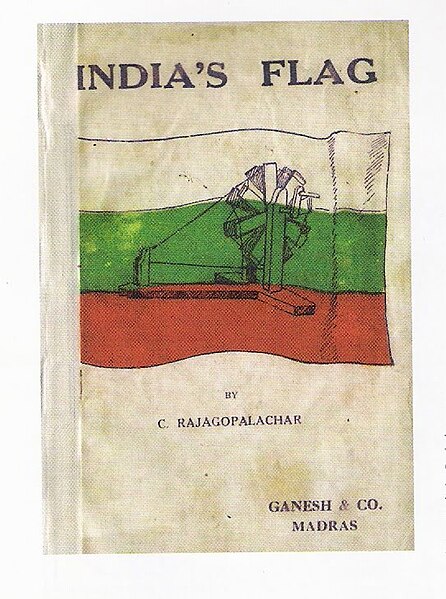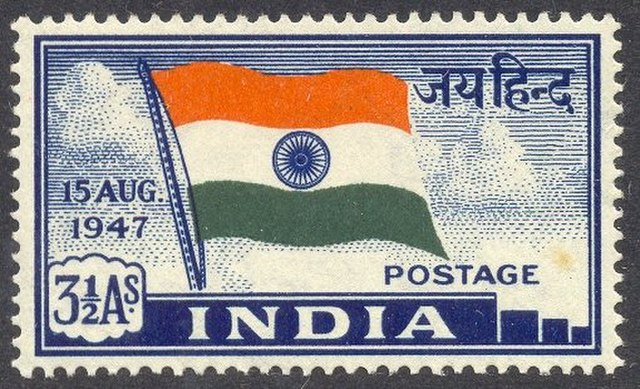Pingali Venkayya was an Indian freedom fighter. He was the designer of the flag on which the initial Indian National Flag was based. He was also a lecturer, author, geologist, educationalist, agriculturist, and a polyglot.
Venkayya on a 2009 stamp of India
Venkaiah Naidu garlanding the statue of Pingali Venkayya at AIR Station in Vijayawada
The national flag of India, colloquially called Tiraṅgā, is a horizontal rectangular tricolour flag, the colours being of India saffron, white and India green; with the Ashoka Chakra, a 24-spoke wheel, in navy blue at its centre. It was adopted in its present form during a meeting of the Constituent Assembly held on 22 July 1947, and it became the official flag of the Union of India on 15 August 1947. The flag was subsequently retained as that of the Republic of India. In India, the term "tricolour" almost always refers to the Indian national flag.
A reproduction of Gandhi's flag, introduced at the Congress meeting in 1921
Indian Flag, the first stamp of independent India, released on 21 November 1947, was meant for foreign correspondence.
Flag of India, New Delhi
The flag of India showcases three colours in a horizontal fashion: saffron, white and green with an Ashoka Chakra in the middle.






